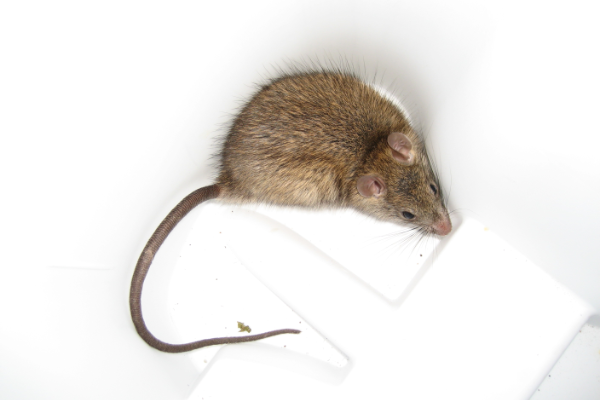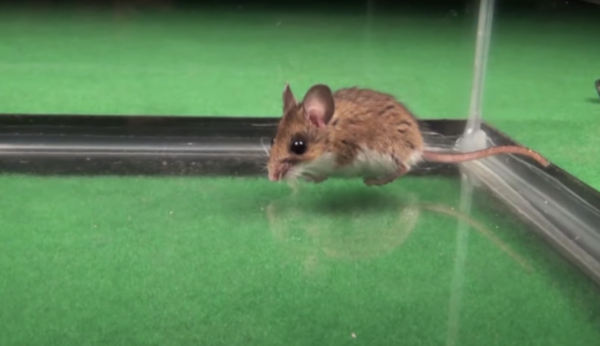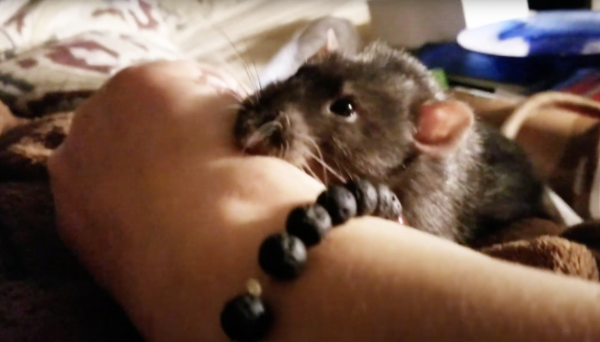Mouse Diseases

Mice and other rodents find their way inside your house and workplace during the cooler times of the year. Their presence becomes evident when you notice the chewed-up furniture, walls, and wires. They are often seen as harmless, but in reality, can cause a lot of damage if they are left to roam around. They have the potential to make a huge mess. They are usually only viewed as rodents who infect your food or chew up furniture, but they can pose serious threats to the people residing in the house.
Mice can be very dangerous. They are carriers of multiple germs. Their presence can spread diseases and illnesses. This in return can be a major concern for you. There are many health factors at risk. These diseases reach humans directly, which makes it even more serious. If you are in contact with mice urine, feces, or even saliva, you can easily catch a disease. Their bites can be deadly too. Some of the diseases that can be spread through mice are stated below.
Hantavirus

This is one of the most common diseases spread through deer mice. This can be transmitted by coming into contact with mouse feces, urine, or saliva through either touching it directly, by touching anything that is contaminated by any of these, or by consuming food that is infected. Not only this but it can also be transmitted when you breathe in the air that contains this virus. This is called airborne transmission.
The symptoms of catching this virus become apparent in 1-8 weeks. Common and most noticeable symptoms include:
- Fever
- Severe pain in muscles
- Headaches
- Chills
- Stomachache
These are the symptoms that are most apparent in the beginning. However, after 10 days, symptoms include constant coughing and difficulty in breathing. This disease needs medical attention as soon as possible. Any delays can be fatal.
Salmonellosis
This is often called food poisoning. It occurs when mice roam around your kitchen. Mice move across many different surfaces and spread this bacterium. It is also spread through the feces of these rodents. It transmits when these infected surfaces or feces come into contact with anything that is later ingested by you.
The symptoms of Salmonellosis can last 2-7 days. Some common symptoms include:
- Nausea
- Loss of appetite
- Fever
- Headache
- Chills
- Frequent stomachaches.
At times, it can go away on its own within a few days without any major treatment. However, other times it will result in diarrhea. This diarrhea can last for a couple of days. It can turn very serious and require urgent medical care. It is advised to see a doctor as soon as any symptoms become noticeable.
Lymphocytic Choriomeningitis (LCM)
The house mouse is usually a carrier of this infection. It can be transmitted after an infected mouse’s urine, feces, or saliva comes in contact with a person. It can also be transferred through broken skin or by the bite of an infected rodent. It is a very dangerous disease and should not be taken lightly.
The symptoms became visible after 8-13 days. The most common symptoms include:
- Fever
- Lack of appetite
- A severe ache in joints and muscles
- Vomiting
- Nausea
- Frequent headaches
Other less common symptoms can also be experienced. These include sore throat, chest pains, and pain in the pituitary gland.
However, there is a second phase of this illness. This is where the serious effects are seen. Since LCM is known to cause neurological diseases, the consequences are similar to that. Symptoms include fever, stiff neck, and headache-meningitis. It can also be in the form of drowsiness with a confused state of mind. This can result in paralysis due to motor imbalances- encephalitis. The final effect is the inflammation of the brain along with meningitis. This is also known as meningoencephalitis.
This is very dangerous and can cause irreversible damage to the brain and sensory nerves.
Lyme Disease
This disease is caused by ticks. Mice carry ticks that can be infected. Spreading of this disease is very common and can cause many problems.
The most common symptom includes a flat and circular bump on the skin. It is most likely to be red in color. It can easily be confused with a normal rash. Other symptoms and signs to look out for are also mentioned.
- Fatigue
- Tiredness
- Joint aches
- Pain in the muscles
- Fever
- Frequent headaches
- Loss of concentration
There are multiple stages of this disease. The best approach is to treat this as soon as possible. It is usually cured. However, if you still face continuing symptoms after the treatment, that condition is called Post-Lyme Disease. This syndrome can have negative effects. Your mobility and cognitive skills may suffer due to this. Recovery is possible, but can take many months. Therefore, it is best to treat it immediately.
Rat-Bite Fever

It is transmitted when rats carry this bacterium. It can be transmitted either by these rats scratching or coming in contact with surfaces that are contaminated. Either way, it can easily infect an individual.
The most common symptoms are very standard and usual. They include:
- Muscle pain
- Headache
- Vomiting excessively
- Fever
Symptoms are noticeable after 3-10 days. It can be fatal if not treated immediately. Hence, it should be looked into on an urgent basis, and ignoring these signs can be life-threatening.
Final Take
Avoidance by taking precautions is the best measure to ensure safety. Fumigating and disinfecting houses and workplaces should be the foremost priority. Neglecting this can lead to disastrous consequences. Keeping spaces clean and getting rid of any rodent is beneficial too. These mouse diseases can be very dangerous. Symptoms may not be seen as very serious or life-endangering, but can later turn out to be fatal. If an individual notices any symptoms or continuously faces the same issue, a specialist should be consulted. They can be better guides and provide the necessary treatment. If not treated in time, it could lead to lethal damage.

